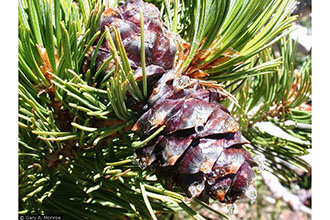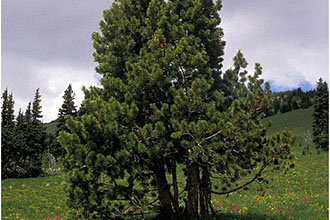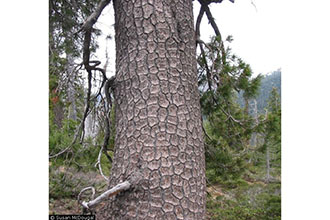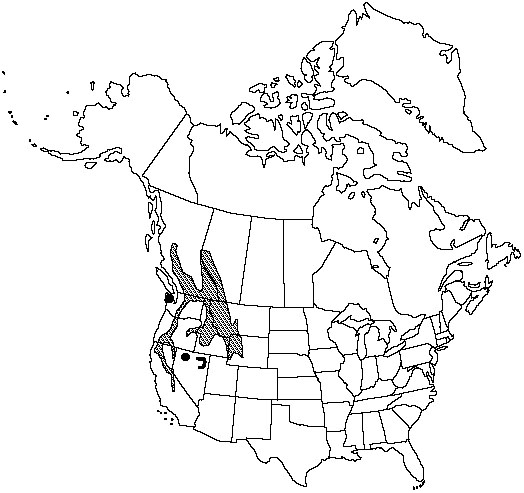Taxonomy: Kingdom - Plantae (plants). Subkingdom - Tracheobionta (vascular plants). Superdivision - Spermatophyta (seed plants). Division - Coniferophyta (conifers). Class - Pinopsida. Order - Pinales. Family - Pinaceae (pine) Genus - Pinus L. (pine). Species - Pinus albicaulis Engelm. (whitebark pine).
Ecology: Whitebark pine (Pinus albicaulis) is a slow-growing, long-lived tree of the high mountains of southwestern Canada and western United States. Whitebark pine grows in the highest elevation forest and at timberline.
On most sites, whitebark pine develops a deep and spreading root system. It is well anchored into the rocky substrate and is seldom uprooted despite its large, exposed crown and the violent winds to which it is subjected. Whitebark pine helps to stabilize snow, soil, and rocks on steep terrain and has potential for use in land-reclamation projects at high elevation.
On a broad range of dry, wind-exposed sites, whitebark pine is a climax or near-climax species that persists indefinitely in association with subalpine fir and other tolerant species because it is hardier, more drought tolerant, more durable, and longer-lived. Even on these severe sites, however, a successional trend may be observable on a small scale: whitebark pine pioneers on an open site and is later surrounded and locally replaced by tolerant fir and hemlock. Whitebark Pine often facilitates the establishment of other tree species by providing shelter from harsh conditions.



